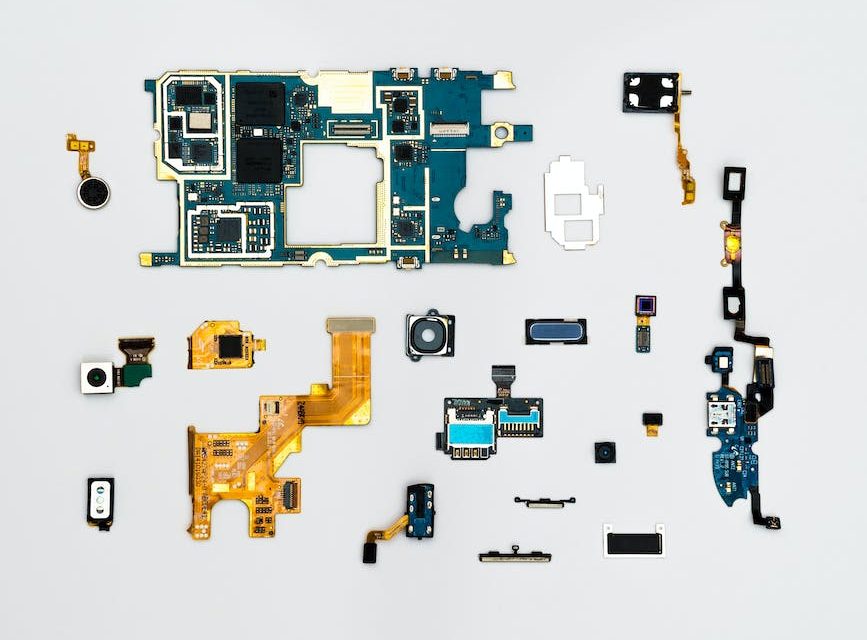Table of Contents
Navigating the Future: Where Leadership, Ethics, and Technology Converge.
Introduction
The intersection of leadership, ethics, and technology is a critical area of study and practice in today’s rapidly evolving world. As technology continues to advance and permeate every aspect of our lives, leaders are faced with complex ethical dilemmas and challenges. This intersection explores how leaders can navigate the ethical implications of technological advancements, make responsible decisions, and ensure that technology is used for the greater good of society. It requires leaders to possess a deep understanding of the ethical considerations associated with technology and to integrate ethical principles into their decision-making processes. By effectively managing this intersection, leaders can foster a culture of ethical behavior, promote responsible use of technology, and drive positive change in their organizations and communities.
The Role of Ethical Leadership in Technological Advancements

The Role of Ethical Leadership in Technological Advancements
In today’s rapidly evolving technological landscape, the role of ethical leadership has become increasingly important. As new technologies emerge and reshape various industries, leaders must navigate the ethical implications that arise. Ethical leadership is crucial in ensuring that technological advancements are used responsibly and for the greater good of society.
One of the key responsibilities of ethical leaders in the realm of technology is to establish a strong ethical framework within their organizations. This framework should guide decision-making processes and ensure that ethical considerations are at the forefront of any technological development. By setting clear expectations and standards, leaders can create a culture that values ethical behavior and encourages employees to act responsibly.
Furthermore, ethical leaders must actively engage with their teams to foster a sense of ethical awareness and responsibility. This involves promoting open dialogue and encouraging employees to voice their concerns or ethical dilemmas they may encounter in their work. By creating a safe space for discussion, leaders can address potential ethical issues before they escalate and ensure that employees feel supported in making ethical decisions.
In addition to internal efforts, ethical leaders must also consider the broader societal impact of their technological advancements. They must take into account the potential consequences of their innovations and consider how they may affect various stakeholders, including customers, employees, and the environment. This requires leaders to conduct thorough ethical assessments and engage in ongoing dialogue with external stakeholders to ensure that their technological advancements align with societal values and needs.
Moreover, ethical leaders must be willing to take responsibility for any negative consequences that may arise from their technological advancements. This includes acknowledging and rectifying any unintended harm caused by their innovations. By taking ownership of their actions, leaders can demonstrate their commitment to ethical behavior and inspire trust among stakeholders.
Another crucial aspect of ethical leadership in technology is the promotion of transparency and accountability. Leaders must ensure that their organizations are transparent about the ethical considerations and decision-making processes behind their technological advancements. This includes being open about any potential risks or limitations associated with their innovations. By being transparent, leaders can build trust with stakeholders and foster a culture of accountability within their organizations.
Furthermore, ethical leaders must stay informed about the latest ethical issues and debates surrounding technology. They must actively seek out knowledge and engage in ongoing learning to ensure that they are equipped to make informed decisions. This includes staying up to date with ethical guidelines and regulations, as well as engaging with experts and thought leaders in the field.
In conclusion, ethical leadership plays a crucial role in navigating the ethical implications of technological advancements. By establishing a strong ethical framework, fostering ethical awareness, considering societal impact, taking responsibility, promoting transparency, and staying informed, leaders can ensure that their organizations use technology responsibly and for the greater good of society. As technology continues to shape our world, ethical leadership will be essential in guiding us towards a future that is both technologically advanced and ethically sound.
Ethical Considerations in the Use of Technology for Leadership
Ethical Considerations in the Use of Technology for Leadership
In today’s digital age, technology plays a crucial role in leadership. From communication tools to data analytics, technology has revolutionized the way leaders operate and make decisions. However, with great power comes great responsibility, and leaders must carefully consider the ethical implications of their technological choices.
One of the key ethical considerations in the use of technology for leadership is privacy. As leaders collect and analyze vast amounts of data, they must ensure that they are respecting the privacy rights of individuals. This means obtaining informed consent before collecting personal information and using encryption and other security measures to protect sensitive data. Leaders must also be transparent about how they are using data and ensure that it is being used for legitimate purposes.
Another ethical consideration is the potential for bias in technology. Algorithms and artificial intelligence systems can be programmed with biases that reflect the values and beliefs of their creators. This can lead to discriminatory outcomes, such as biased hiring decisions or unequal access to resources. Leaders must be aware of these biases and take steps to mitigate them, such as regularly auditing algorithms and diversifying the teams responsible for developing and implementing technology.
The use of technology in leadership also raises concerns about job displacement and inequality. Automation and artificial intelligence have the potential to replace human workers, particularly in low-skilled jobs. This can lead to unemployment and economic inequality. Leaders must consider the impact of their technological choices on workers and take steps to ensure that the benefits of technology are shared equitably. This may involve retraining programs, job creation initiatives, or policies that promote a fair distribution of wealth.
Additionally, leaders must consider the environmental impact of their technological choices. The production and use of technology can contribute to carbon emissions and other forms of pollution. Leaders must strive to minimize their environmental footprint by choosing energy-efficient technologies, promoting recycling and responsible disposal of electronic waste, and supporting renewable energy sources.
Furthermore, leaders must be mindful of the potential for technology addiction and its impact on mental health. The constant connectivity and information overload enabled by technology can lead to stress, burnout, and a lack of work-life balance. Leaders must set boundaries and encourage their teams to disconnect and prioritize self-care. They should also promote a healthy organizational culture that values well-being over constant productivity.
In conclusion, the use of technology in leadership brings with it a host of ethical considerations. Leaders must navigate issues of privacy, bias, job displacement, inequality, environmental impact, and mental health. By being mindful of these considerations and taking proactive steps to address them, leaders can harness the power of technology while ensuring that it is used ethically and responsibly. Ultimately, the intersection of leadership, ethics, and technology requires leaders to make thoughtful and principled decisions that prioritize the well-being of individuals and society as a whole.
The Impact of Technological Innovations on Ethical Leadership
The Impact of Technological Innovations on Ethical Leadership
In today’s rapidly evolving technological landscape, the intersection of leadership, ethics, and technology has become increasingly complex. Technological innovations have brought about significant changes in the way organizations operate, communicate, and make decisions. These advancements have not only transformed the business landscape but have also posed new challenges for ethical leadership.
One of the key impacts of technological innovations on ethical leadership is the increased accessibility and availability of information. With the advent of the internet and social media, information is now readily accessible to anyone with an internet connection. This has empowered employees, customers, and other stakeholders to hold leaders accountable for their actions. Ethical leaders must navigate this new reality by being transparent, honest, and accountable in their decision-making processes.
Furthermore, technological advancements have also given rise to new ethical dilemmas that leaders must grapple with. For instance, the use of artificial intelligence (AI) and machine learning algorithms in decision-making processes can raise concerns about bias and discrimination. Ethical leaders must ensure that these technologies are used responsibly and that they do not perpetuate existing inequalities or harm individuals or communities.
Another significant impact of technological innovations on ethical leadership is the need for leaders to adapt to the changing nature of work. The rise of remote work, flexible schedules, and virtual teams has necessitated a shift in leadership styles and practices. Ethical leaders must find ways to foster trust, collaboration, and engagement in a digital environment. They must also ensure that employees are equipped with the necessary skills and resources to navigate the digital landscape ethically and responsibly.
Moreover, technological innovations have also brought about new opportunities for ethical leadership. For instance, the use of data analytics and predictive modeling can help leaders make more informed and ethical decisions. By leveraging data, leaders can identify patterns, trends, and potential risks, enabling them to proactively address ethical concerns. Ethical leaders can also use technology to enhance transparency and accountability by implementing systems that track and report on ethical performance.
However, it is important to note that technological innovations alone cannot guarantee ethical leadership. Ethical leadership is ultimately about the values, principles, and behaviors of leaders. Technology can be a powerful tool, but it is the ethical mindset and actions of leaders that determine whether technology is used for the greater good or for unethical purposes.
In conclusion, the impact of technological innovations on ethical leadership is profound. Leaders must navigate the increased accessibility of information, address new ethical dilemmas, adapt to the changing nature of work, and leverage technology for ethical decision-making. Ethical leadership in the digital age requires leaders to be transparent, accountable, and responsible in their actions. It also necessitates a deep understanding of the ethical implications of technology and a commitment to using it for the greater good. By embracing these challenges and opportunities, leaders can navigate the intersection of leadership, ethics, and technology and create a positive and ethical organizational culture.
Balancing Ethical Decision-Making and Technological Advancements in Leadership
In today’s rapidly evolving technological landscape, leaders are faced with the challenge of balancing ethical decision-making with the advancements in technology. As technology continues to shape our world, leaders must navigate the ethical implications that arise from its use. This article explores the intersection of leadership, ethics, and technology, and the importance of finding a balance between them.
Leadership is often associated with making tough decisions, and ethical decision-making is a crucial aspect of effective leadership. Ethical decision-making involves considering the moral implications of one’s actions and making choices that align with ethical principles. However, with the advent of new technologies, leaders are faced with unique ethical dilemmas that require careful consideration.
One of the key challenges that leaders face is the potential for technology to be used in ways that violate ethical principles. For example, the use of artificial intelligence (AI) in decision-making processes can raise concerns about bias and discrimination. Leaders must ensure that the algorithms used in AI systems are fair and unbiased, and that they do not perpetuate existing inequalities.
Another ethical concern that leaders must address is the impact of technology on privacy and data security. With the increasing amount of personal data being collected and stored, leaders must take steps to protect the privacy of individuals and ensure that data is used responsibly. This requires implementing robust security measures and adhering to data protection regulations.
Furthermore, leaders must consider the ethical implications of automation and its impact on the workforce. While automation can increase efficiency and productivity, it can also lead to job displacement and inequality. Leaders must find ways to mitigate these negative consequences and ensure that the benefits of automation are shared equitably.
Finding a balance between ethical decision-making and technological advancements requires leaders to adopt a proactive approach. They must stay informed about the latest technological developments and their ethical implications. This involves keeping up with research and engaging in ongoing learning and development.
Additionally, leaders must foster a culture of ethical behavior within their organizations. This includes promoting open communication, encouraging ethical decision-making, and providing training and support to employees. By creating an ethical culture, leaders can ensure that ethical considerations are at the forefront of decision-making processes.
Collaboration and partnerships are also essential in navigating the intersection of leadership, ethics, and technology. Leaders should engage with experts in the field of ethics and technology to gain insights and perspectives that can inform their decision-making. By working together, leaders can develop ethical frameworks and guidelines that can guide their organizations in the responsible use of technology.
In conclusion, the intersection of leadership, ethics, and technology presents both challenges and opportunities for leaders. Balancing ethical decision-making with technological advancements requires leaders to stay informed, foster an ethical culture, and collaborate with experts. By doing so, leaders can navigate the ethical implications of technology and ensure that its use aligns with ethical principles. Ultimately, finding this balance is crucial for effective leadership in the digital age.
Q&A
1. What is the intersection of leadership, ethics, and technology?
The intersection of leadership, ethics, and technology refers to the ethical considerations and responsibilities that leaders face when making decisions about the use and development of technology within their organizations.
2. Why is the intersection of leadership, ethics, and technology important?
It is important because leaders must navigate the ethical implications of technological advancements, such as data privacy, artificial intelligence, and automation, to ensure responsible and ethical use of technology within their organizations.
3. What are some ethical challenges that leaders face in the context of technology?
Some ethical challenges include ensuring data privacy and security, addressing biases in algorithms and AI systems, managing the impact of automation on jobs, and considering the social and environmental consequences of technological advancements.
4. How can leaders address the intersection of leadership, ethics, and technology?
Leaders can address this intersection by establishing clear ethical guidelines and policies, promoting transparency and accountability in technology use, fostering a culture of ethical decision-making, and staying informed about emerging ethical issues in technology.
Conclusion
In conclusion, the intersection of leadership, ethics, and technology is a critical area that requires careful consideration. As technology continues to advance, leaders must navigate the ethical implications and ensure that their decisions align with moral principles. Ethical leadership in the context of technology involves making responsible choices, promoting transparency, and prioritizing the well-being of individuals and society. By integrating ethics into their leadership practices, leaders can effectively harness the power of technology while upholding ethical standards and fostering trust among stakeholders.





